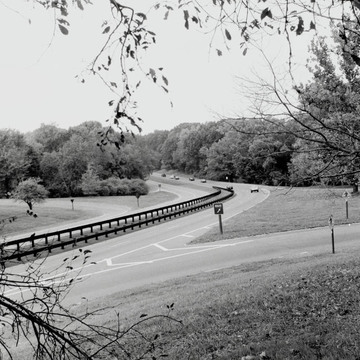You are here
George Washington Memorial Parkway
Skirting the west bank of the Potomac from north of Washington, D.C., south to Mount Vernon, a length of approximately 25 miles, the parkway provides scenic views of the river, landscape, and Washington, as well as access to various memorials and institutions. The concept of a “great road” linking Mount Vernon and Washington was envisioned as early as 1872 and then revived with the McMillan Commission study of 1901–1902. The sesquicentennial fervor of 1926 and the vision of recreational uses in the new motor age brought a new study in 1927 by Charles W. Eliot, who served as director of planning for the National Capital Park and Planning Commission. The CapperCramton Act of 1930 provided the initial funds, and construction began under the aegis of the Bureau of Public Roads. Opened to traffic in 1932 as part of the bicentennial celebration of Washington's birth, the initial section ran from the Virginia terminus of Memorial Bridge at the north, south through downtown Alexandria to Mount Vernon, a length of 15.5 miles. Highly praised at the time, it was considered by an engineering publication to be “America's Most Modern Motorway.” Initially named the Mount Vernon Memorial Highway, it was renamed the George Washington Memorial Parkway. The 9.7-mile section to the north, from Memorial Bridge to I-495 (the Capital Beltway), was planned almost immediately, but took until the 1960s for completion. The initial designers, Clarke and Downer, and the arborist, Henry
Writing Credits
If SAH Archipedia has been useful to you, please consider supporting it.
SAH Archipedia tells the story of the United States through its buildings, landscapes, and cities. This freely available resource empowers the public with authoritative knowledge that deepens their understanding and appreciation of the built environment. But the Society of Architectural Historians, which created SAH Archipedia with University of Virginia Press, needs your support to maintain the high-caliber research, writing, photography, cartography, editing, design, and programming that make SAH Archipedia a trusted online resource available to all who value the history of place, heritage tourism, and learning.

